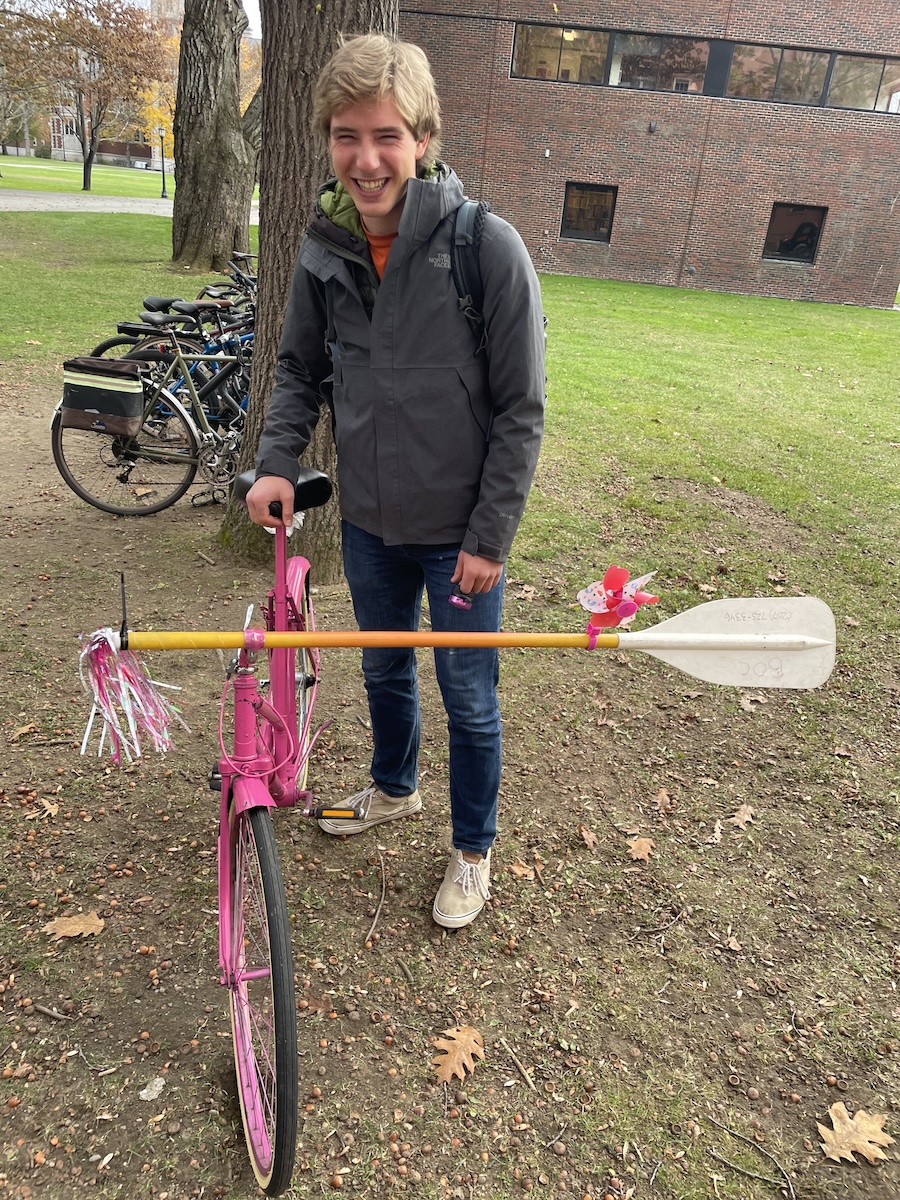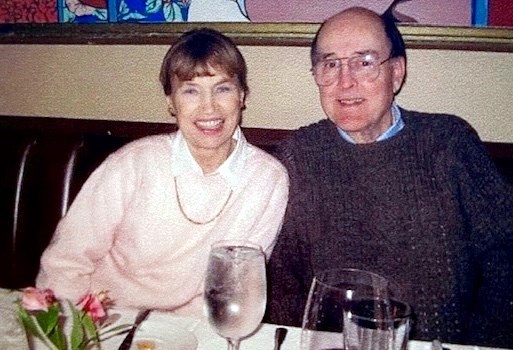Adventures of a Hydrodynamic Duo: Bowdoin Physics Students Compete in The Race to Alaska
By Sean Li '23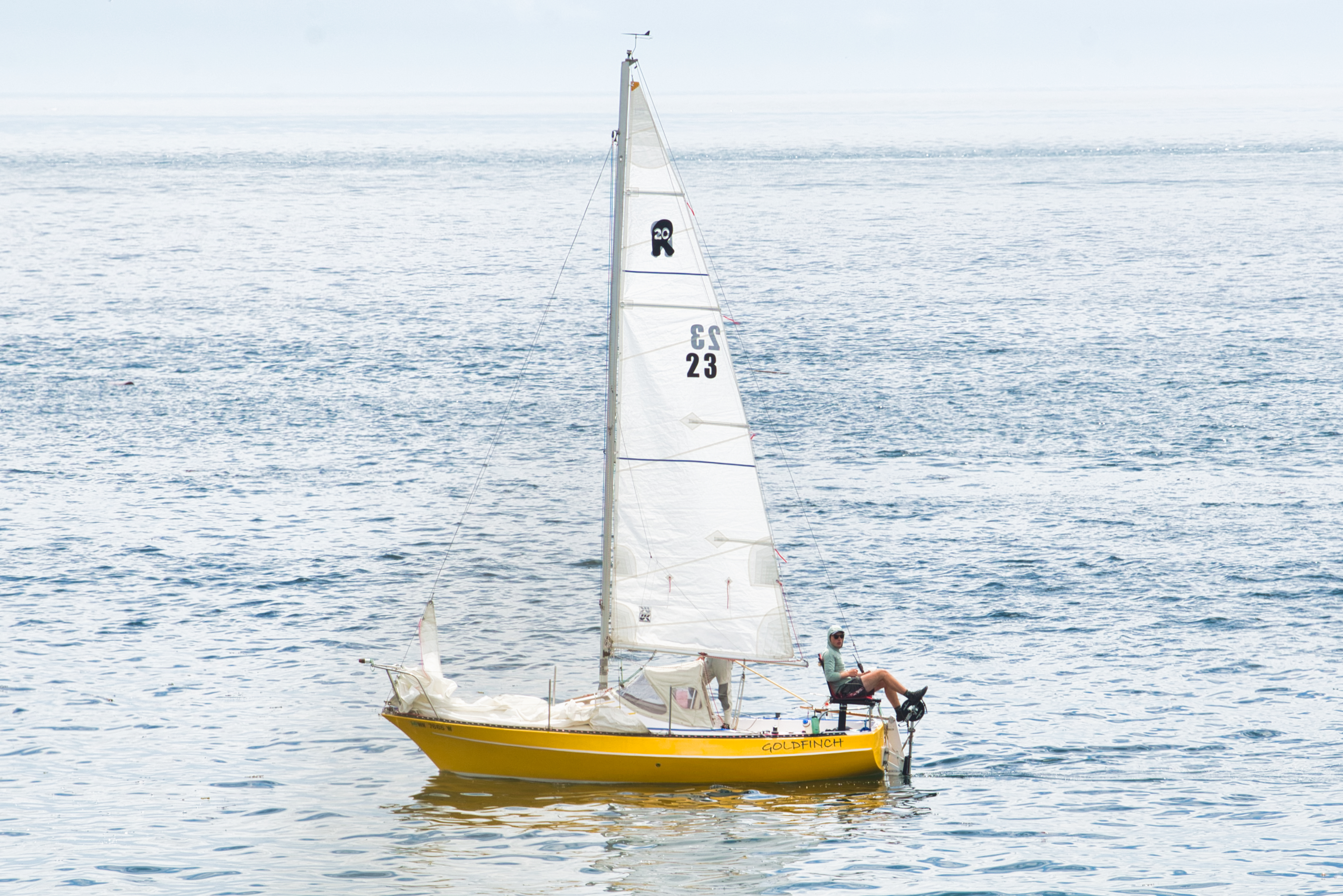
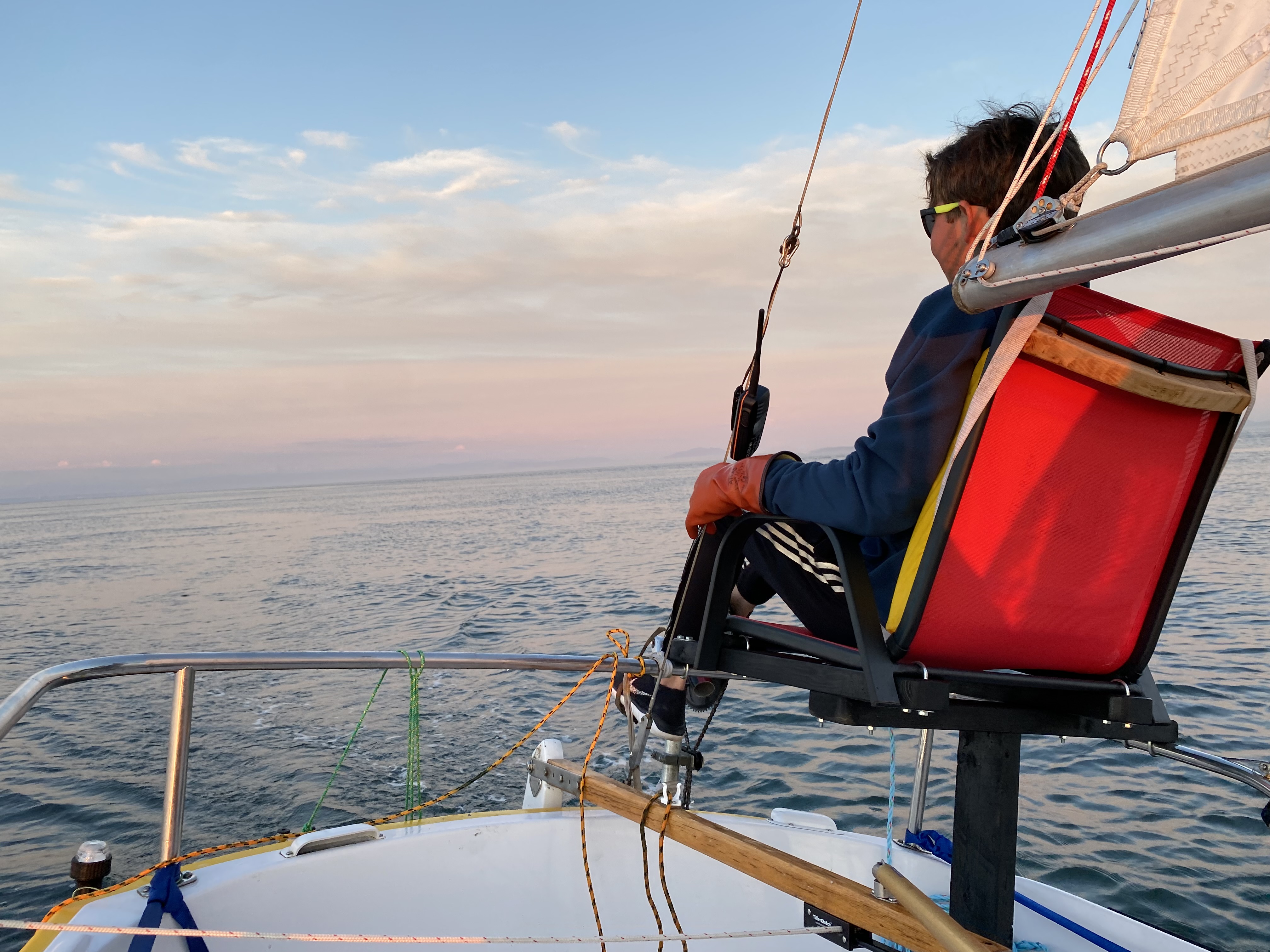

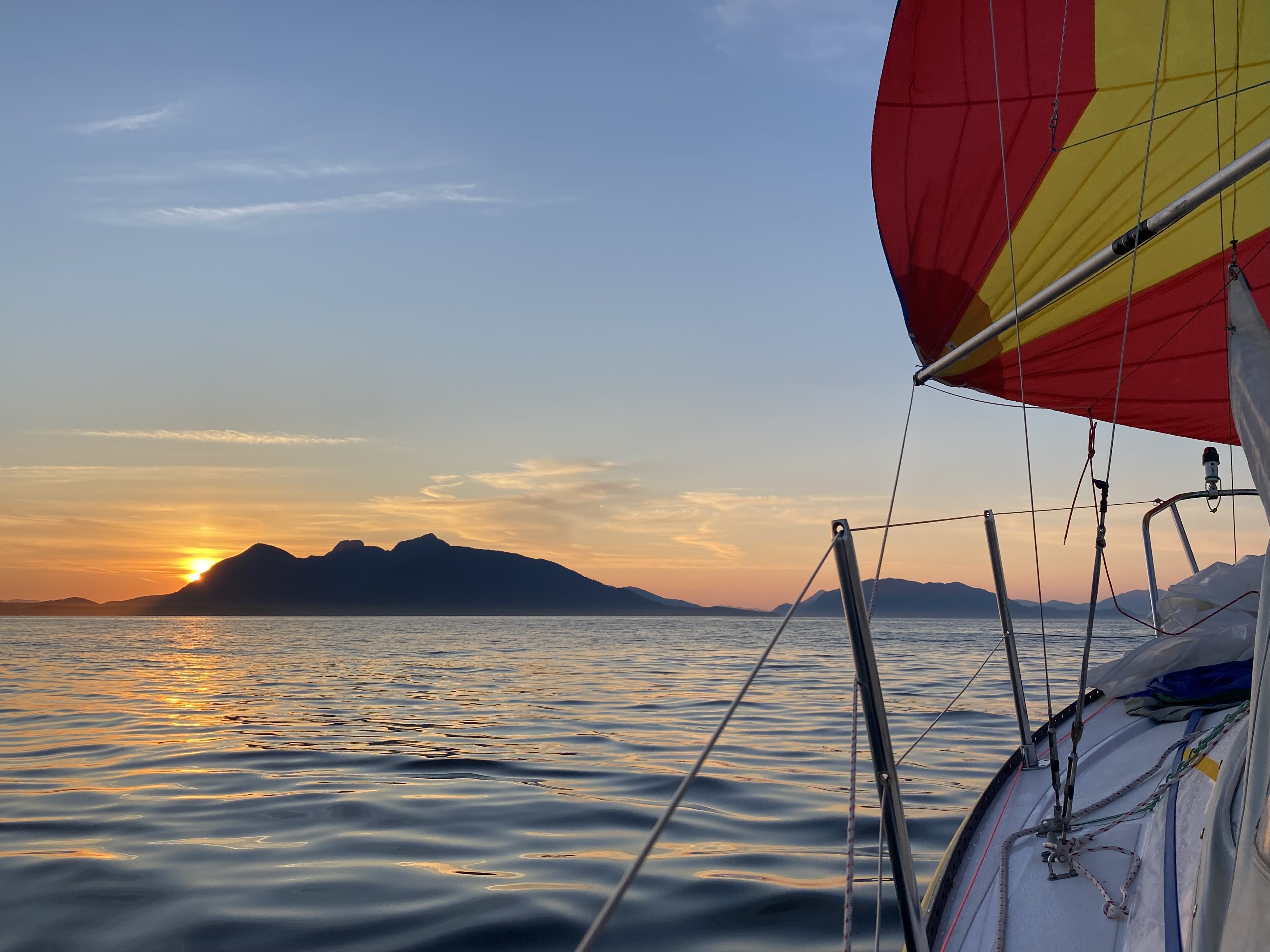
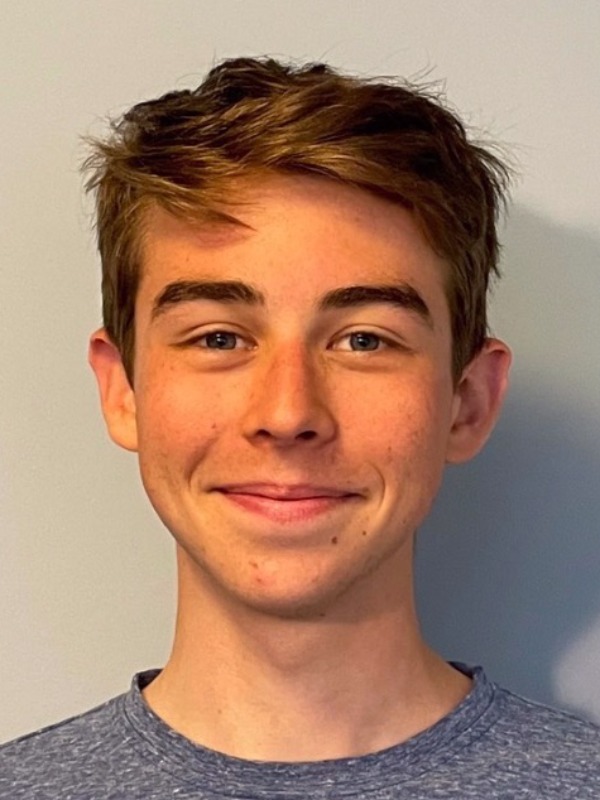
The two participated together in the Race To Alaska (abbreviated “R2AK” by enthusiasts), a human- and wind-powered boat race totaling 1200 kilometers along the unforgiving inside passage to Alaska.
The race is well known in Washington state, where Sam began sailing in eighth grade. Caleb, from California, has been sailing his whole life, and by the time he met Sam at Bowdoin while collaborating on physics homework, he had long-awaited his chance to compete.
When Caleb applied for a solo boat and the R2AK organizers told him he’d need something bigger, he convinced Sam to come along.
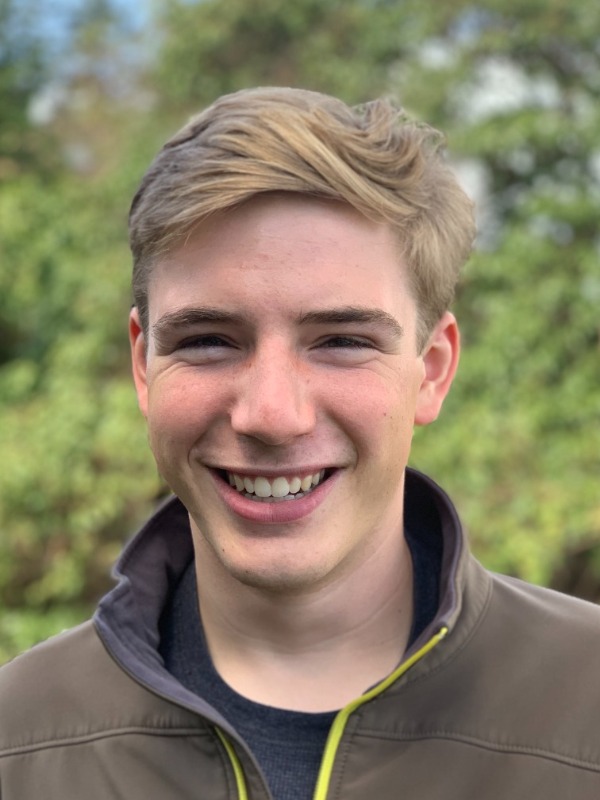
Thus, under the banner of Team Goldfinch, the two sailors embarked on a voyage that would have them navigating online forums, engineering problems, the machine shop in the basement of Searles, good-old classical mechanics, and at the end, huge waves, 30-knot (15 meters per second) winds, and landslide debris lifted by high tide.
Out of 45 teams, they placed 26th in Stage One (60 kilometers from Port Townsend to Victoria, British Columbia) and 13th out of the 19 that finished Stage Two (1140 kilometers from Victoria to Ketchikan).
Caleb and Sam borrowed a small sailboat from a builder on a “you break it, you bought it” agreement. And the risks were real: four Coast Guard rescues occurred on the first day of the race, and the pair would witness another team’s mast snap under shock-loading from increased apparent wind due to the boat being thrown about by waves.
But before they even saw the boat, Caleb and Sam got to work engineering a human-powered propulsion system.
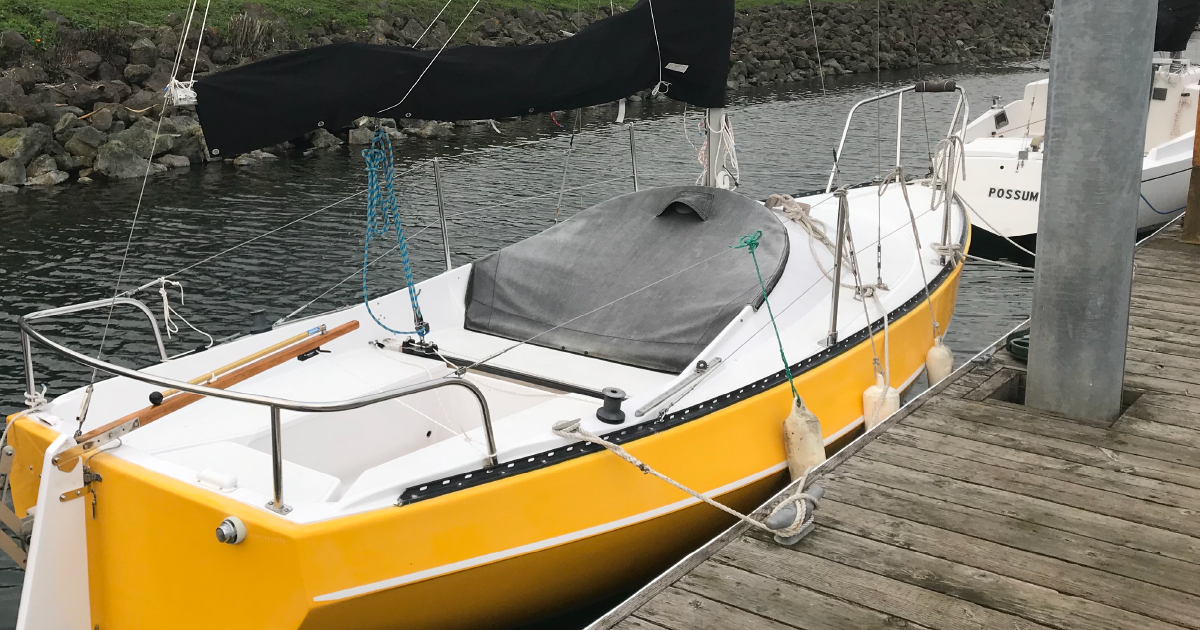
Whereas rowboats are long and skinny, sailboats need more width and buoyancy in their bows to be efficient under sail power, and are usually higher off the water.
That rules out rowing—but there isn’t always a tailwind to rely on, either. Caleb and Sam needed another way to deliver constant thrust.
“There’s actually some good physics there,” Caleb added, grinning. “With a rowing boat, your motion is not continuous thrust—you have your stroke and the recovery phase,” said Caleb.
But a propeller generates a continuous thrust that can be more efficient for a sailboat. (In a side-by-side comparison, however, oars might win out).
“I brought a lot of skepticism,” Ben admitted. “I said, ‘You’re gonna run a bicycle chain in salt water for two weeks.’”
Sam credits Ben for figuring out “what generally would fall apart first and how to make sure that it lasted the whole race.”
“By virtue of decades of experience,” Ben remarked, “I’ve seen a lot of things fall apart.”
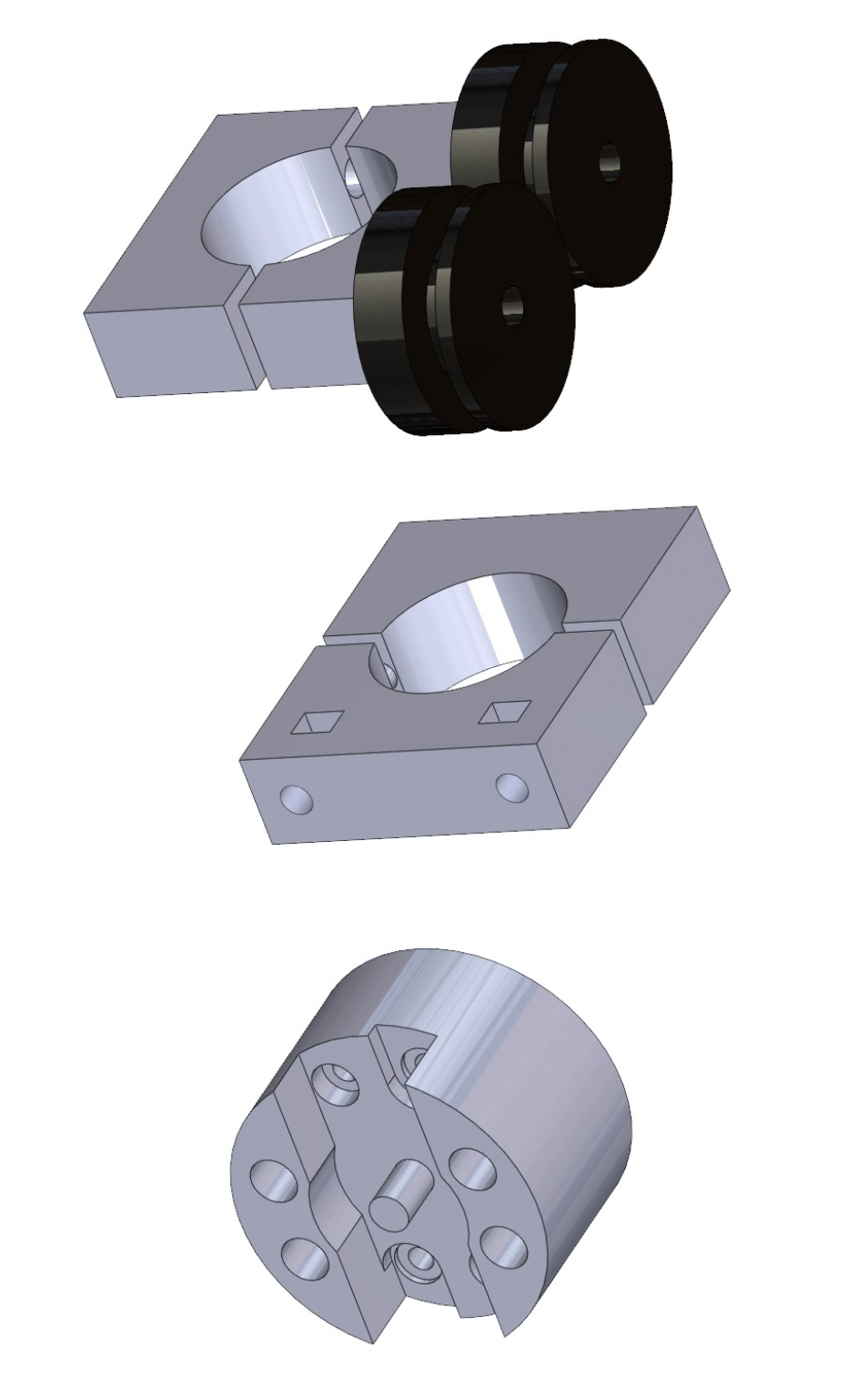
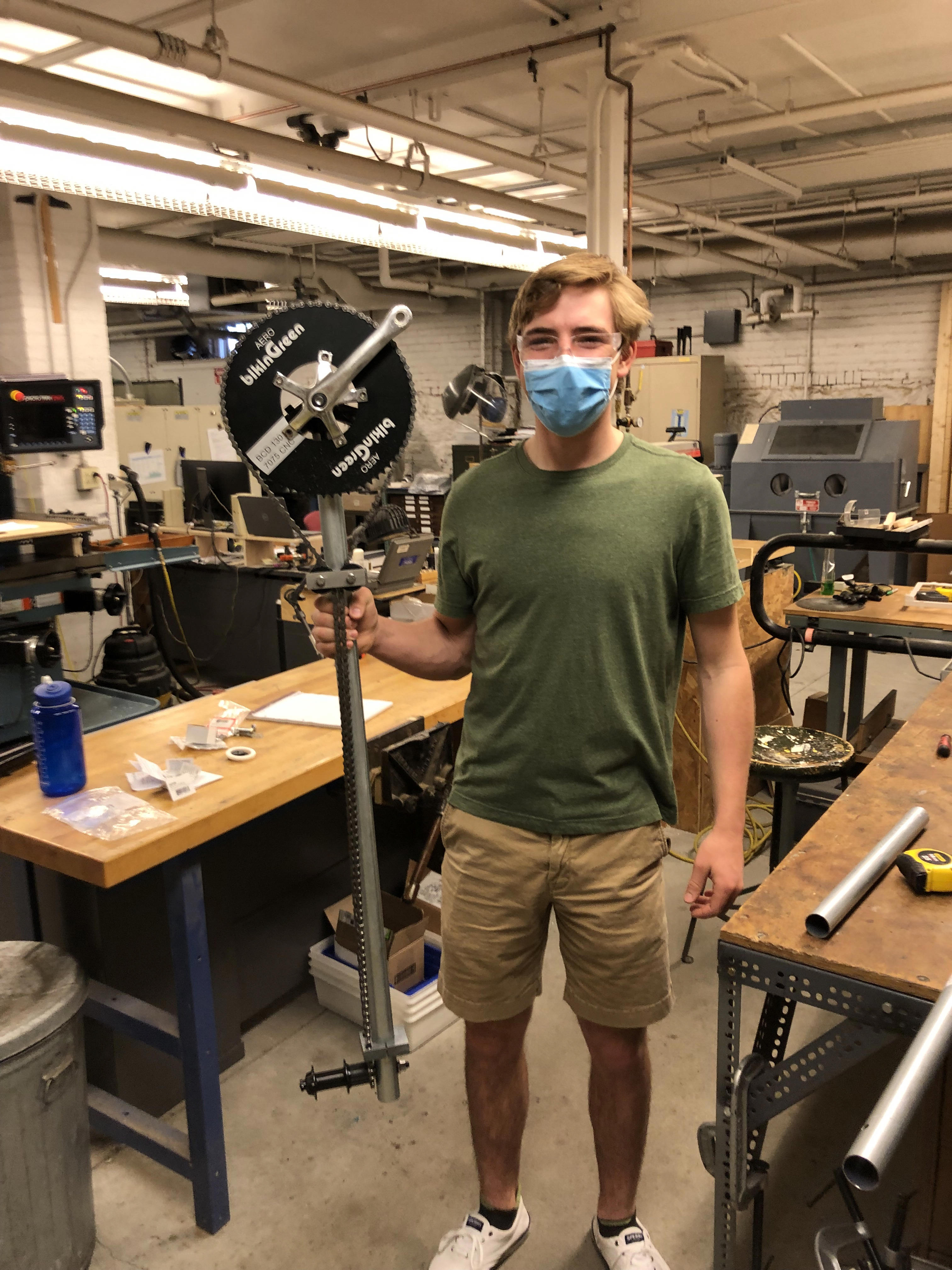
They harvested some components from a donated bicycle, like the bottom bracket shell, crank bearings, and the hub (for those of us who haven’t memorized bicycle anatomy, pictured below).
Caleb consulted forums for ideas and the three used some rotting 2x4 planks for prototyping.
Sam “bought a lawn chair from Safeway and bolted it onto the boat.” Ben also helped with some milling and lathe work.

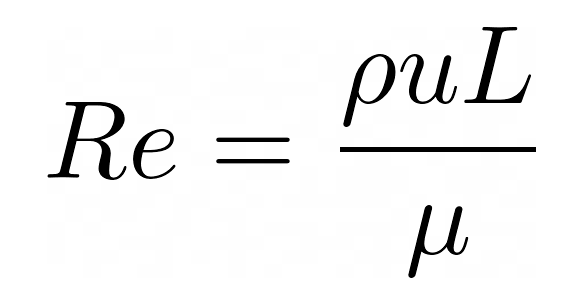
For the propeller itself, Caleb and Sam adapted a model airplane propeller to install onto their bicycle hub.
“The model airplane propeller spinning at a high RPM in air actually has a similar Reynolds number for a slower propeller in water,” explained Caleb, who is fascinated by fluid dynamics.
The Reynolds number (formula on the right) relates the fluid density ρ, flow speed u, dynamic viscosity μ, and characteristic linear dimension L (such as the length of the propeller blades).
Water is more dense and viscous than air, but the slower flow speed past a human-powered boat propeller works to cancel that effect.
The Reynolds number is often used to predict the transition from laminar flow (smooth, without lateral mixing) to turbulent flow (chaotic, with eddies and vortices), so knowing the Reynolds number of their propeller meant Caleb and Sam roughly knew what to expect for the race.
But, for better or worse, theory only gets you so far. Sam recalls,
“The [Stage Two] race started at noon. We sailed all day together and had gotten pretty far, and we were super psyched.”
Once they entered the strait of Georgia, between Vancouver Island and the coast of B.C., the winds accelerated to 30 knots and reality set in.
“I went to bed first, and Caleb was up for 28 hours. In the morning I was throwing up over the side of the boat, and Caleb was hallucinating from exhaustion.”
At that point, sailing onward to Ketchikan was faster than turning back or awaiting rescue, so they kept going.
Then at Bella Bella, a small first-nation town off the coast of B.C., and the halfway point of the race, their free-hub ratchets broke.
“We got out the paddle-board paddles and paddled our way to the dock.”
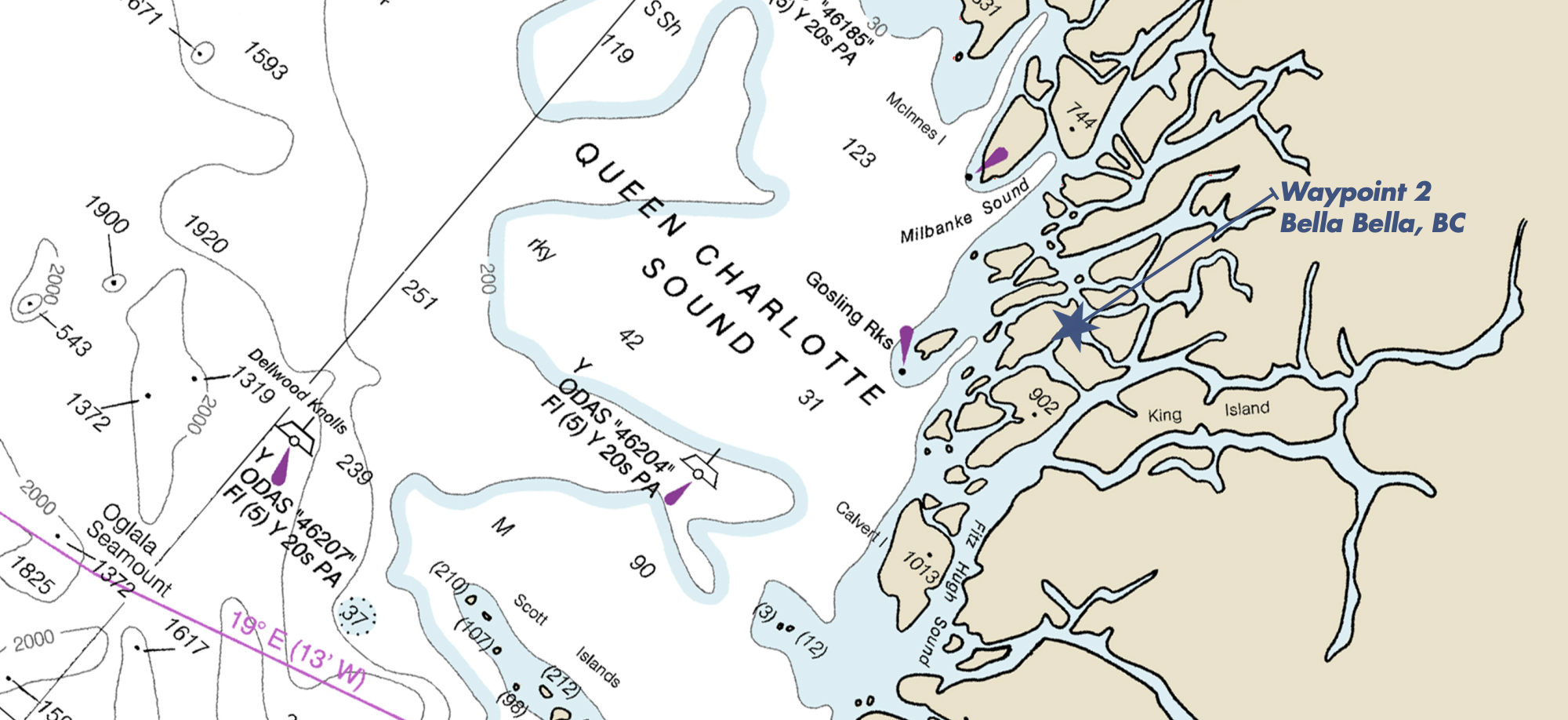
Despite the grueling conditions and setbacks, Caleb and Sam made it to Ketchikan; and not only that, but also they placed 13th out of the 19 teams that finished (recall that 32 boats attempted Stage Two).
Many of those other boats were larger and faster, including the ones they edged out.
When asked whether they’d do it again, the two hesitated (very understandably), then answered in the affirmative.
But for now, they’re moving onward in their Bowdoin education. Caleb, who loves fluid dynamics and engineering, said he’s committed to the physics major, but he’s also embracing the liberal arts curriculum with classes in Spanish and fiddle.
Sam is less sure about the physics major, as he also enjoys urban studies, art history, and government.
Whatever they end up doing, they have the momentum to go far—and, dare we say, make waves.

